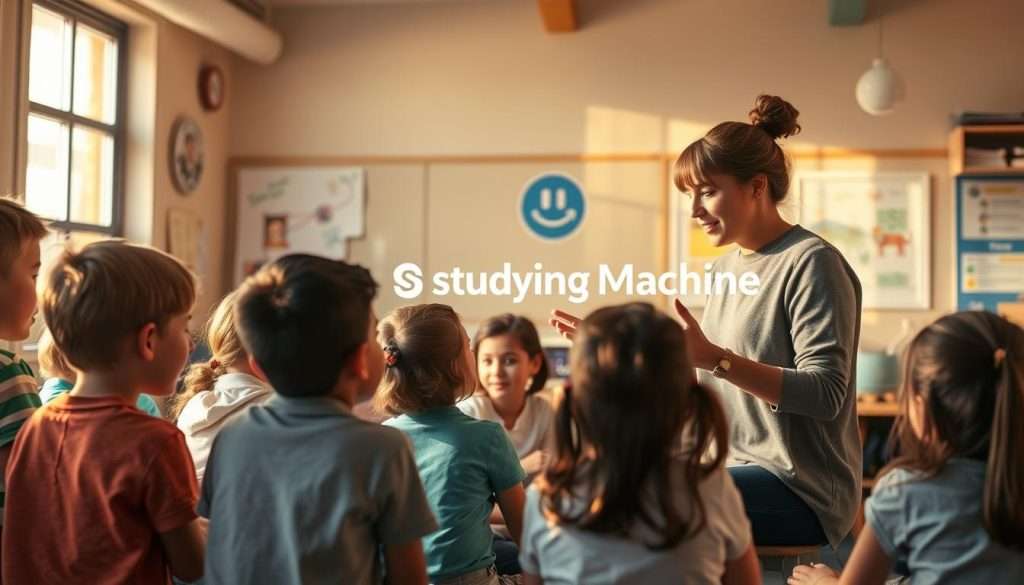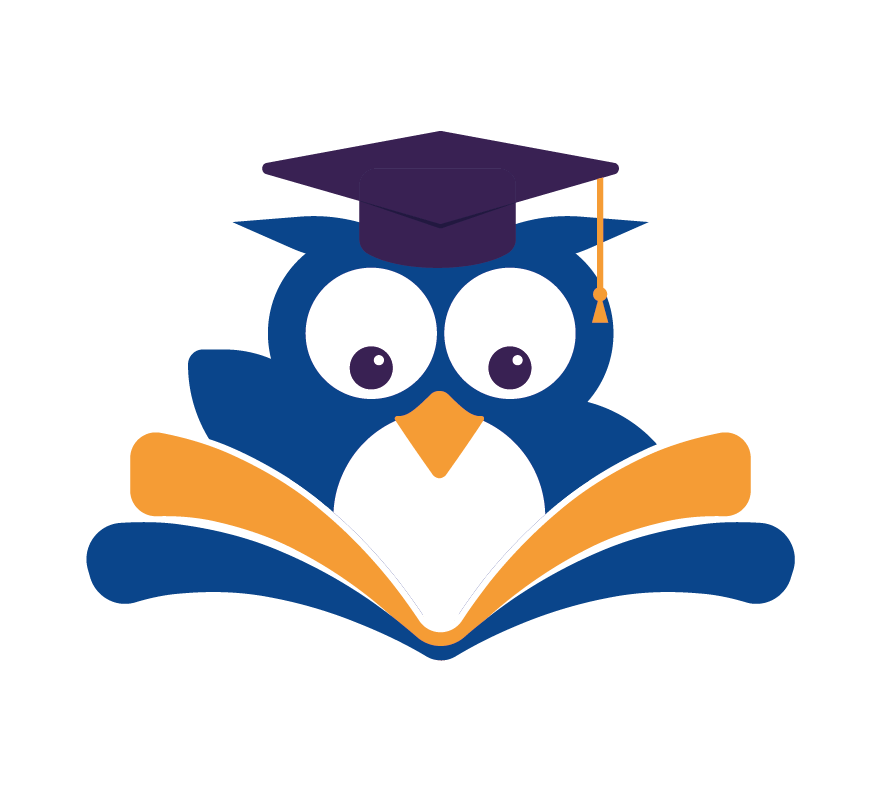We all know that effective learning techniques can make a big difference. James Altman says, “Anything I can do to help people succeed in their learning journey gives me a buzz.” This shows the power of narrative learning.
Tarek Issa’s insight is, “People remember stories long, long after you give them facts.” This shows the impact of storytelling on remembering information. Using this tool, we can make learning more fun and effective.
Key Takeaways
- Storytelling enhances information retention
- Narrative learning makes the learning experience more engaging
- Effective learning techniques can be derived from storytelling methods
The Science Behind Storytelling in Learning
Exploring the science of storytelling in learning reveals how our brains work. It shows that stories are more than just fun ways to share info. They tap into our brain’s natural ways of learning and remembering.
How Our Brains Process Stories vs. Facts
Our brains handle stories and facts differently. Facts stay as just data. But stories fit into a bigger picture, making them easier to remember.
This is because stories use many parts of our brain at once. This makes them stick in our memory better.
The Neurological Impact of Narrative Learning
Learning through stories has a big effect on our brains. Studies show that stories make our brains release special hormones. These hormones help us feel and remember stories better.
Research-Backed Evidence of Storytelling Effectiveness
Many studies prove that stories help us learn. They make us remember more, stay interested, and understand better. As Joe Navarro says, “Not all words have the same weight.” This shows how important it is to use stories in teaching.
Key Benefits of Educational Storytelling
Stories in education make learning more fun and effective. They grab students’ attention and help them remember complex ideas better. Tarek Issa says stories can share complex info in a way that feels real.
Enhanced Memory Retention and Recall
Storytelling boosts memory and recall in students. It uses both emotions and thinking to help remember. This makes it easier to recall information later.
Increased Engagement and Motivation
Stories also make students more interested and motivated. James Altman shares how a professor’s stories made him more engaged. Stories make learning fun and interesting, even in tough subjects.
Development of Empathy and Emotional Intelligence
Stories help students understand and feel for others. They learn from different characters and experiences. This helps develop empathy and emotional smarts, important for school and life.
In short, storytelling in education offers many benefits. It improves memory, boosts interest, and helps students feel and understand others. By using stories, teachers can make learning more engaging and meaningful.
Essential Elements of Effective Learning Stories
To make the most of storytelling in education, we must know the key parts of a good story. Effective learning stories are not just fun; they’re also built to have a big educational impact.
Character Development in Educational Narratives
Creating characters is key in educational stories. Well-crafted characters make stories more relatable and easy to remember. Think about their goals, obstacles, and how they grow in the story. This helps learners feel connected and care about the story’s end.
Plot Structures That Enhance Learning
A good plot keeps learners interested. Effective plot structures have a clear start, middle, and end. They include exciting moments that keep the story moving. By adding educational content, we mix fun with learning smoothly.
Creating Meaningful Conflict and Resolution
Conflict and resolution drive a story. Meaningful conflict tests characters and learners, encouraging them to think critically and solve problems. The resolution wraps up the story and reinforces what was learned, making it more impactful.
By using these key elements, teachers can create engaging stories. These stories not only grab learners’ attention but also help them understand and remember what they’ve learned. As we delve deeper into educational storytelling, we open up new ways to make learning fun and effective.
Storytelling Techniques for Different Learning Styles
Storytelling is a powerful tool in education. It can be made even more effective by tailoring it to different learning styles. As educators, we know students learn in many ways. By using various storytelling techniques, we can meet these different needs and improve learning.

Visual Storytelling for Visual Learners
Visual learners love stories with images, diagrams, and videos. Visual aids help them connect the story to the lesson. For example, infographics or short videos can make learning easier and stickier.
Auditory Storytelling Approaches
Auditory learners enjoy stories full of sound. This includes podcasts, audiobooks, or oral presentations. Sound helps create an immersive experience that auditory learners find engaging and helps them understand better.
Kinesthetic Learning Through Interactive Stories
Kinesthetic learners do best when they can touch and do things. This can be through role-playing, interactive digital stories, or hands-on activities. Interactive stories make learning fun and hands-on, engaging kinesthetic learners fully.
By using these different storytelling methods, educators can make learning more inclusive and fun. This approach not only improves learning but also makes education more enjoyable for all.
Implementing Storytelling in Learning: A Practical Guide
As educators, we’re always looking for new ways to grab our students’ attention. Storytelling is a powerful tool that makes learning more fun and memorable. It turns our teaching into an adventure that students will never forget.
James Altman’s story shows how storytelling can change the game in learning. It shows how stories can make students more engaged and help them remember what they learn.
Storytelling in Classroom Environments
In the classroom, stories can make complex ideas easy to understand. Teachers can share stories, historical tales, or even fiction to help students grasp important concepts. This sparks interesting discussions and helps students connect with the material.
Here are some key strategies for classroom storytelling:
- Use stories to make learning material more relatable
- Ask students to share their own stories related to the topic
- Set up a storytelling corner where students can share their tales
Digital Storytelling for Online Learning
Online learning has opened up new ways to tell stories. Teachers can use digital tools to create interactive stories that grab the attention of students learning from home.
| Digital Storytelling Tools | Features |
|---|---|
| Interactive Video Platforms | Allow for branching narratives and learner choices |
| Podcasting | Enables the creation of audio narratives and interviews |
| Virtual Reality (VR) and Augmented Reality (AR) | Offer immersive storytelling experiences |
Incorporating Stories in Self-Directed Learning
For students learning on their own, stories can be part of interactive e-books, learning games, and online forums. Here, learners can share their own stories and experiences.
By using stories in all kinds of learning settings, teachers can make learning more fun, improve how well students remember what they learn, and make the whole experience more enjoyable.
Step-by-Step Guide to Creating Educational Stories
Let’s explore how to make stories that teach and inspire. Educational stories can grab learners’ attention and make hard topics easy to understand. We’ll show you how to create stories that engage and educate your audience.
Identifying Learning Objectives First
Start by figuring out what you want learners to learn. What skills or knowledge do you aim to share? Knowing your goals helps you craft a story that meets those needs. For example, teaching history might mean showing the importance of a key event.
Crafting Characters That Resonate with Learners
Characters are the core of any story. Think about what your learners like and who they are. Make your characters real and relatable, with goals that match your audience’s interests. For instance, a science lesson could follow a young scientist facing challenges.

Weaving Educational Content into Compelling Narratives
With your characters and goals in mind, blend the educational content into a story. Use a clear story structure and add conflict to keep it interesting. Make sure the learning parts feel natural and not forced. For example, a story about solving a problem can teach math.
Testing and Refining Your Educational Stories
Try out your story with a few learners to see what they think. Use their feedback to improve the story. Keep tweaking until it feels just right for your audience.
| Step | Description | Example |
|---|---|---|
| 1. Identify Learning Objectives | Define what learners should take away from the story | Understanding the significance of a historical event |
| 2. Craft Relatable Characters | Create diverse, authentic characters with goals and challenges | A young scientist overcoming obstacles |
| 3. Weave Educational Content into the Narrative | Use a clear structure and integrate educational content naturally | Teaching mathematical concepts through a real-world problem |
| 4. Test and Refine | Gather feedback and make adjustments to the story | Refining character development based on learner feedback |
Real-World Success Stories of Storytelling in Education
Storytelling in education is more than just a theory. It’s proven by real success stories. Teachers from different subjects have used stories to improve learning.
Case Study: Storytelling in STEM Education
In STEM, stories make hard topics easier and more fun. A study showed that math students got better at solving problems. They also became more interested in math.
Case Study: Narrative Approaches in Language Learning
Storytelling also helps in learning languages. Teachers use stories to help students understand and remember new words better.
Case Study: Corporate Training Through Storytelling
Storytelling is used in corporate training too. Companies use stories to keep employees interested and help them remember what they learned.
These examples show how storytelling works in education. It’s effective in many areas, from school subjects to work training.
Overcoming Common Challenges in Educational Storytelling
Storytelling can make learning better, but it faces many hurdles. We must tackle these challenges to make the most of it. This way, we can use storytelling to its fullest in teaching.
Balancing Entertainment with Educational Value
One big challenge is mixing fun with learning. Teachers should aim to create stories that both entertain and teach. They can do this by weaving educational facts into the story naturally.
For example, teaching history through stories about important people or events can grab students’ interest. It makes learning more fun and helps them remember better.
Adapting Stories for Different Age Groups and Cultures
Another challenge is making stories fit for all ages and cultures. Teachers need to consider their students’ diverse backgrounds. They should adjust their stories to match the cultural and age needs of their students.
Stories for young kids might teach simple lessons, while older students can handle more complex topics. Being aware of cultural differences helps teachers avoid misunderstandings in their stories.
Measuring the Effectiveness of Story-Based Learning
It’s also important to check if storytelling works in learning. Teachers can use tests and feedback to see how well it’s working. This could include quizzes, class talks, and projects that show how well students get the lesson.
By checking how well storytelling works, teachers can improve it. This ongoing effort helps make storytelling a powerful tool in education.
Conclusion: Transforming Education Through the Power of Stories
Storytelling in learning can change how we learn and remember things. It makes learning fun, engaging, and effective. This way, students enjoy their studies more.
Stories help us remember better, stay motivated, and feel empathy. Teachers use characters, plots, and conflicts to make stories interesting. This grabs students’ attention.
James Altman says, “Sharing that story might just change the way you see yourself.” This shows how powerful stories are in education. They make students more interested and inspired to learn.
Using narrative learning opens up new ways to teach. It makes learning more fun and effective. Tarek Issa reminds us, “You are defined by more than one story.” There are many ways to tell our stories.

